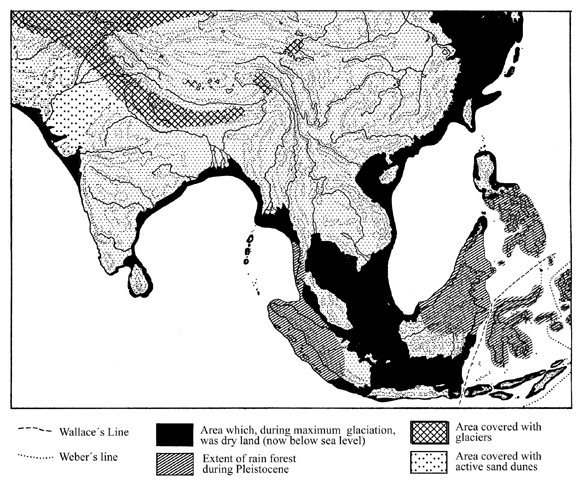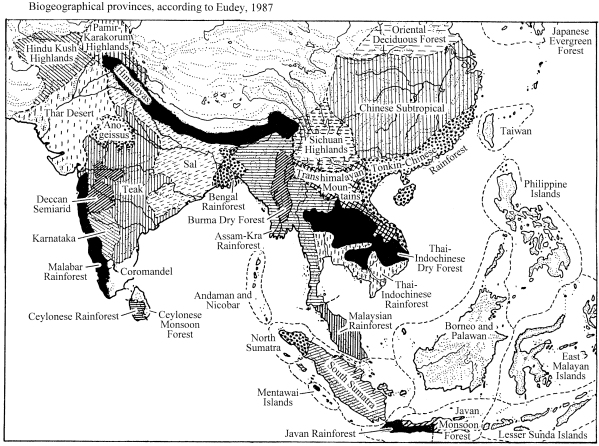
| Home |
|
|
|

Approximate extent of Pleistocene land during maximum
glaciation,
18 000 years ago, based on Pelz, 1999 (including historical data
from Jonathan
Adams, University of Adelaide), Ripley (1969), Dawson (1992)
Guthrie (1990)
and Bartholomew (1979) (present day depth of sea ground).
Sources of habitat information: Pleistocene rainforest based
on
Pelz, 1999, extent of glaciers: Carlton 1985, active sand dunes:
Dawson
1992.
Wallace┤s Line, Weber┤s Line: faunal barriers consisting of deeper areas in which, during Pleistocene, no land bridges existed; separate regions without faunal exchange contributed to the development of areas with a distinct fauna. In general, the climate was probably dryer than today because a lot of water was included in glaciers, and the general extent of rainforest was therefore more limited than today (Pelz 1999). According to Ripley (1969) in certain regions the climate at times was was more humid; the landbridge between India and Sri Lanka for instance was probably covered with deciduous forest over some time or, in even more humid periods, with tropical rain forest, allowing several periods of migration of forest fauna between India and Sri Lanka. Distribution of primate species and subspecies in Vietnam indicate the former existence of a faunal barrier from east to west at about 14║N to 17║N (see map of present state of distribution area, next figure), possibly associated with a Pleistocene glacial interval of reduced temperature, reduced rainfall and increased seasonality (Fooden 1996, quoting Heaney 1991). Climatic changes also allowed temporal spreading of cold-adapted mountain fauna and flora representatives of populations which are presently found in the Himalaya to Sri Lankan Highland (Ripley 1969)
Present geography and natural rainforest
extent
Rainforest extent based on Ripley (1969); deforestation not
considered.

Biogeographical provinces, based on Eudey, 1987

For detailed habitat information see WWF - National
Geographic:
WildWorld: Terrestrial ecoregions of the world. http://www.nationalgeographic.com/wildworld/terrestrial.html
| http://www.species.net/primates/loris
Lorises and pottos: species, subspecies, local populations |
Last
amendment: 14
November 2003
|